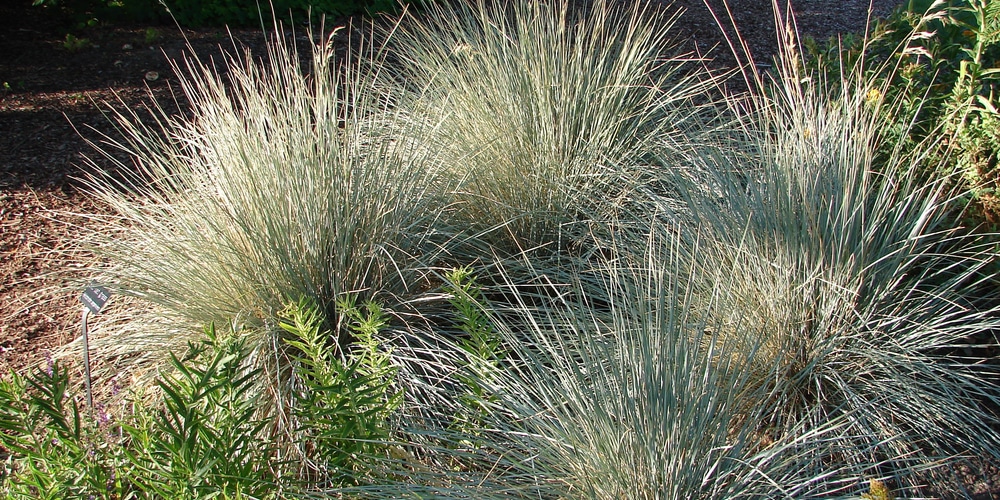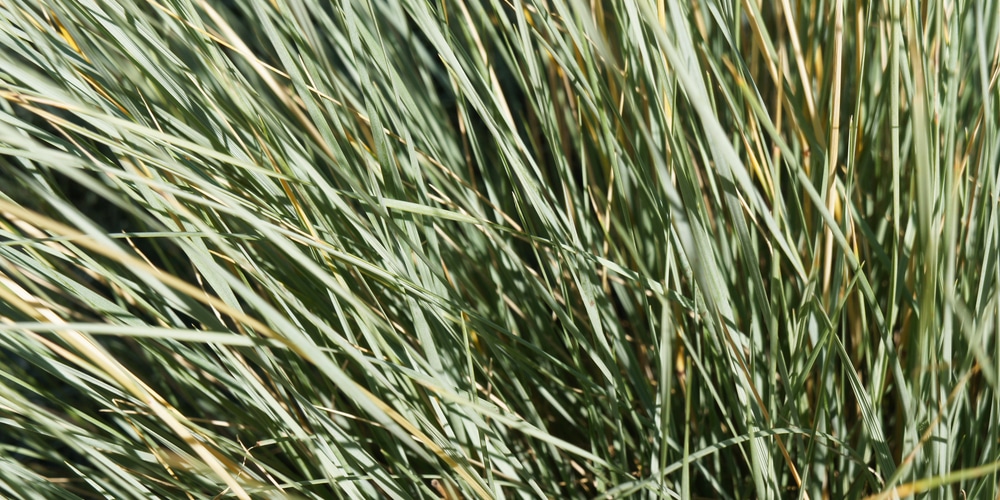Blue oat grass (Helictotrichon Sempervirens), also commonly referred to as Texas wild oats, is an evergreen perennial that grows in clumps. In the summer months, it produces small blue flowers. This beautiful ornamental grass is relatively hardy and can be grown in USDA zones 4 to 9.
Texas wild oats look great and make a striking addition to any flower bed or garden area. As it is both drought and cold-tolerant, it is also ideal for planting in the sunny garden spots of cooler climates. Let’s look at how to grow and care for blue oat grass.
What is Blue Oat Grass?

Helictotrichon Sempervirens is native to Europe and is commonly grown in yards worldwide as an ornamental species (not to be confused with stout blue-eyed grass, an Illinois favorite). This Perennial plant has the botanical name Helictotrichon Sempervirens. Other common names include Texas wild oats, star grass, northern sea oats, and needlegrass. Blue oat grass features thin stems with short-stalked leaves growing in clumps about two to three feet tall, blooming in late summer with small flowers.
Blue Oat Grass Care Requirements
When caring for blue oat grass plants, there are several characteristics that should be considered to ensure success with this type of plant. While it is hardy, Texas wild oats are sensitive to damage from cold weather and hailstorms. It generally grows best in areas with full sun and sandy soil that drains quickly.
Texas wild oat grass is a cool-season grass that isn’t an invasive species and, once planted, doesn’t require much care. Here are some tips to help you grow healthy blue oat grass:
Planting
From planting to maturity, blue oat grass requires about 150 days for growth before it begins blooming. To promote faster growth, soak the newly planted blue oat grass seed in water before planting, and then do not water again until buds begin to form. If planted too early, the seeds will rot and die.
You can grow blue oat grass from seed indoors in the fall before transplanting outside. As these plants are cool-season grasses, they are frost tolerant as long as they have been acclimatized.
Soil
It is easy to grow and care for, provided it is planted in well-drained soil of loamy texture with high organic content. It does not require fertilizer but can benefit from mulch, especially in hot climates. It likes a neutral soil to slightly acidic and has a pH range of between 6.0 and 7.5.
Watering requirements
Blue oat grass is drought-tolerant and thrives in areas with poor drainage, although plants that are not watered adequately will appear thin and spindly with fewer blooms. It should also be watered every few days, depending on the level of heat and sunlight present where the plants are located.
Sunlight needs
It loves a dry and cool climate but also requires enough sun, so be sure to plant them where they can get a lot of sunlight. Your plant needs approximately six hours of sunlight a day to thrive.
Fertilization
Blue oat grass doesn’t require much fertilizing. Use a balanced 10-10-10 fertilizer once or twice a year. Beware that you do not fertilize too much, or it could have the opposite effect and kill your grass.
Pests
While BOG is generally pest-free, there are a few problems that can occur from time to time. Slugs and snails may decimate blue oat grass seedlings, while deer may eat the plants. Spider mites are also common, but these pests can be treated by spraying the plant with a blast of water to knock them off and then with insecticidal soap or horticultural oil spray.
Pruning
You can cut the dead flower heads off the plant in the fall and remove any dead shoots of grass. These plants don’t require much pruning but can be cut back or raked to remove dead leaves and stop thatch from accumulating.
Conclusion
Blue oat grass is a lovely ornamental grass that can be added to landscape displays and flower beds. It can also be grown in containers. BOG is a cool-season grass that does well in milder climates but also likes the sun and thrives in dry, well-draining soil.
Surprisingly, a lot of folks like to compare blue oat grass to blue fescue, but glue oat grass is ornamental, while blue fescue is a turf grass.
